An EXCLUSIVE SNEAK PEEK behind the scenes at DC Comics in the Bronze Age…

By PAUL KUPPERBERG
One person’s nostalgia is another person’s history. Or maybe it’s the other way around. Whatever. The point is, Direct Conversations: Talks With Fellow DC Comics Bronze Age Creators is a book filled with creators’ memories of that point in comic book history.
But it was a bit of both nostalgia and history that motivated me to sit down with 10 old friends and colleagues — Howard V. Chaykin, Jack C. Harris, Tony Isabella, Paul Levitz, Steve Mitchell, Bob Rozakis, Joe Staton, Anthony Tollin, Bob Toomey and Michael Uslan — to talk about our beginning days in comics in the early and mid-1970s. Which, for those of you who don’t want to do the math, was 50 years ago, give or take a few. Not to harsh anybody’s mellow, but the loss in recent years of too many of my peers and coevals and their memories of those times was also a motivating factor. While I was still on the fence about doing this project, I started doodling a wish list of creators to talk with and was shocked and saddened to realize how many of them were no longer here to share their stories. “You’re on Social Security, pops!” I told myself, “What are you waiting for? Better get it done now!”
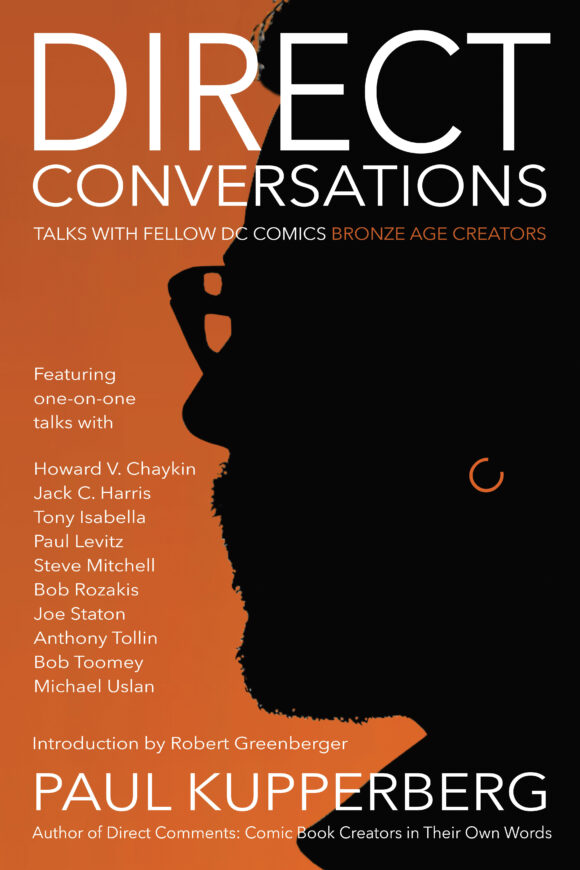
So, I got it done and it’s called Direct Conversations, which is now, even as you read these words, up on Kickstarter for backing for a December 2022/January 2023 release from Crazy 8 Press. (Click here for the Direct Conversations Kickstarter page!)
I went into Direct Conversations with lists of questions and plans for what I wanted to talk about, but it very quickly became very obvious that any preconceived notions I had about which way the conversations would go were way off the mark. Our talks took on lives of their own and went off in directions I hadn’t anticipated and resulted in learning some things I never would have even thought to ask about.
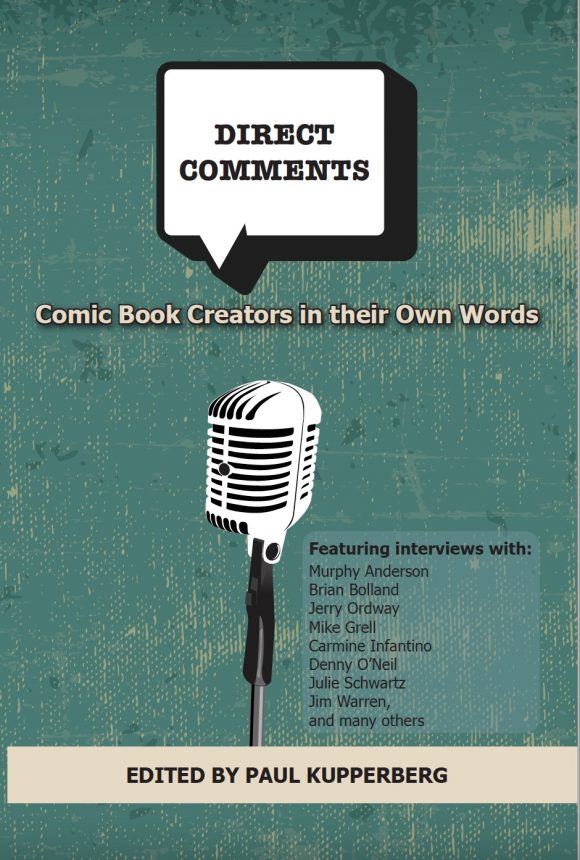
Like last year’s Direct Comments: Comic Book Creators in their Own Words (circa-1990s interviews with two dozen creators conducted for the DC Direct Currents comic shop newsletter) Direct Conversations is a labor of love. Over and beyond giving me the chance to spend some time in conversation (albeit over Zoom) with friends, once concentrated in New York to work in comics and now scattered across the country, it’s also brought the stories of that pivotal time in comics history to life by the people who not only witnessed it, but who also helped make it happen.
Here then, my 13 FAVORITE QUOTES FROM DIRECT CONVERSATIONS. (And again, here’s the Kickstarter link!)
—
From the Introduction by writer/editor Robert Greenberger: “They seemed to be coming out of the woodwork by 1973 with more than a few finding their way to staff positions at DC, scattered between editorial and production offices. Then, one day, Production Manager Sol Harrison had (Bob) Rozakis gather the handful for a meeting, which Rozakis dubbed the Junior Woodchucks—based on Donald Duck’s Junior Woodchucks of the World—a name that stuck. Out on Long Island, I was among the next generation of comics fans, the tail end of the Boomer generation, too young to even know DC gave tours. But I did get to attend several of the Seuling Cons (as we called them) and his spinoff Second Sundays (a monthly dealer’s room, no programming), and there befriended those already producing zines—(Paul) Levitz, Kupperberg, Neal Pozner, Adam Malin, Gary Berman, Gary Groth—and a few who even had started writing for DC and Marvel—(Marv) Wolfman, (Steve) Skeates, Gerry Conway, Steve Englehart. Learning of their stories, those heady days of comics fandom’s rise was fascinating. I clearly had missed out on a lot, but that never stopped my desire to be among them.”
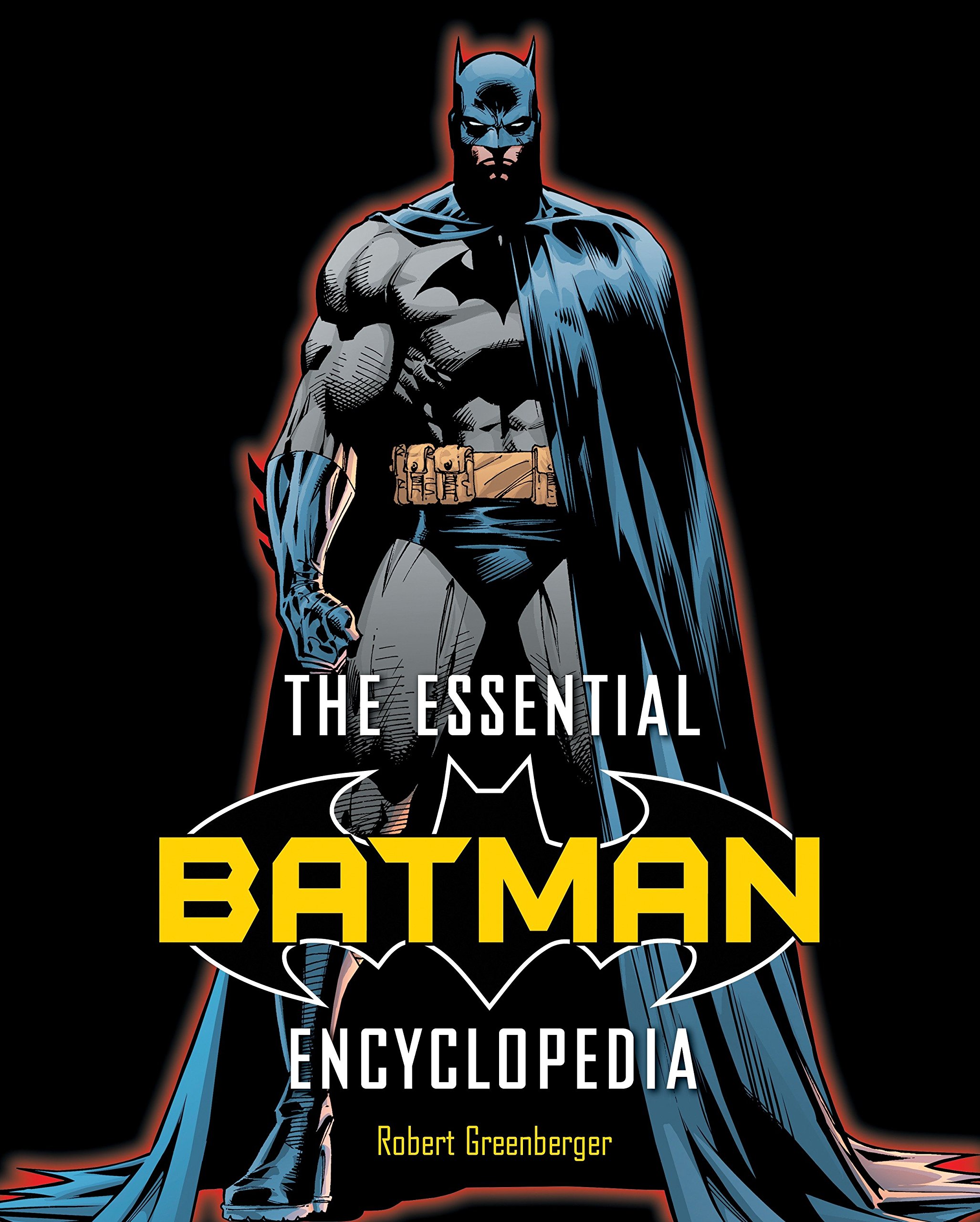
—
Writer/artist Howard V. Chaykin: “(When I was starting at Marvel) I ran into Mike Esposito, who I didn’t know but I knew his work, of course. And we were talking about Gray Morrow. I had stars in my eyes, and I asked ‘Mike, are you a fan?’ Esposito looked at me with such utter and complete contempt. I’ve never heard anybody convey more loathing and condescension and bile and disdain in just three letters, as when Mike said, ‘Fan?’ like he could have vomited on my shoes. It was fantastic. It was a really revelatory moment for my understanding about how the comic book hierarchy and food chain worked.”

Sword of Sorcery #1
—
Inker/production artist/documentarian Steve Mitchell: “One day Neal (Adams) comes in with a drawing he’s done of Tarzan to sort of prove to Joe (Kubert) that well, he could do that too. Neal and Joe were very competitive. Neal would probably be the first one to admit that Joe was great. And I think Joe would admit that Neal was great, but I think Neal was always trying to play on Joe’s level. Neal was super talented, but not a great storyteller. Joe was probably one of the top five storytellers in comics history. He once told me that good storytelling was if you could follow the story without reading the word balloons. So, Joe looks at Neal’s drawing and asks if he can borrow it. He takes it back to his office, puts a piece of tracing paper over it and with a red marker, starts outlining changes. Neal made Tarzan very buff, very muscular, but Joe drew him as lean and athletic, with more of a swimmer’s build. Joe’s marking up Neal’s pencils on this overlay, not being snide or nasty, just showing Neal how Joe saw Tarzan. And Neal just had to grin and bear it. Neal was always looking for a fight because he always thought he was right, and a lot of times he was. As far as I’m concerned Neal is right up there on the Mount Rushmore alongside Joe, but I always got the feeling he might have thought Kubert was just maybe a little bit better than him.”
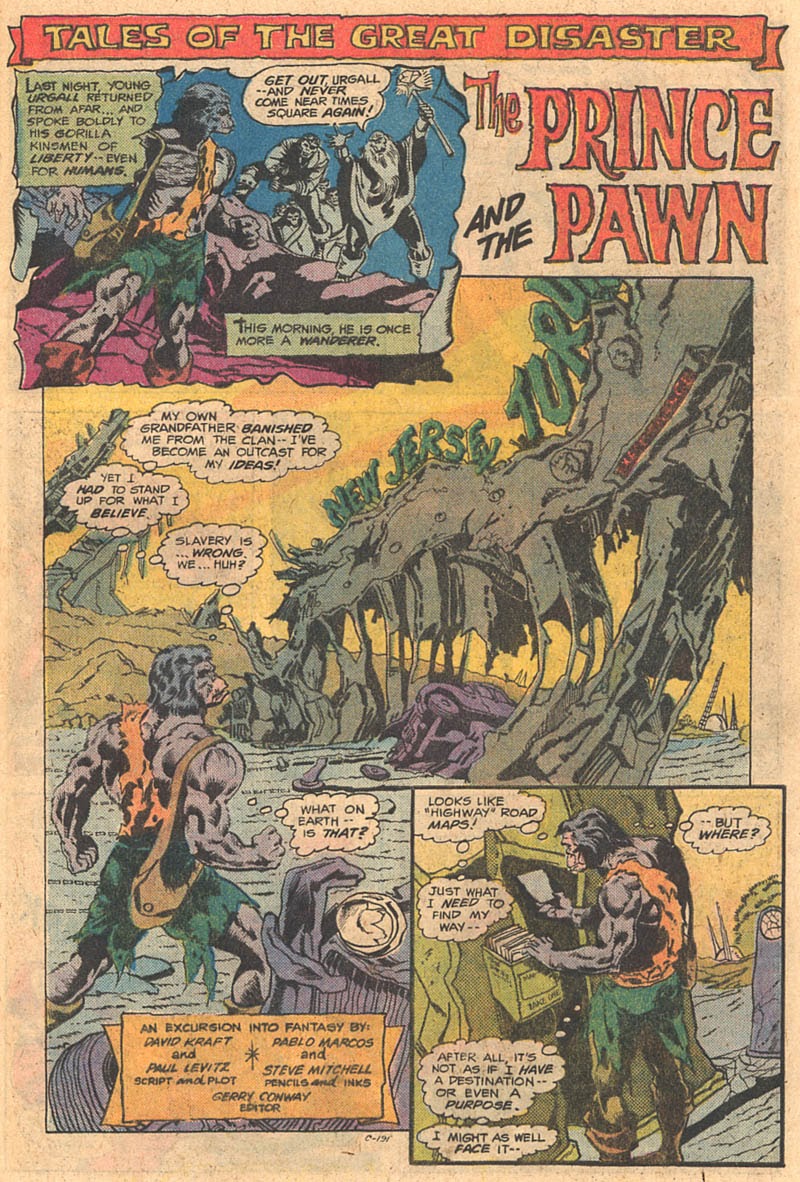
Kamandi #44
—
Writer/editor/former DC Comics President and Publisher Paul Levitz: “(Comic books) was a small community. For the most part they were pleasantly surprised that anyone gave a damn about what they were doing. I think that was one of the reasons we got the access and welcome we did. We demonstrated fairly early on both a willingness to do the work and respect for the work itself, which they hadn’t experienced a lot in their lives. So, I think that probably was part of the reason. I mean, my career even more than yours—you sort of followed a pattern that other people had already followed, that existed and made sense, but I was a kid and hiring me was breaking so many labor laws, and so many of those decisions that seem utterly irrational in retrospect.”
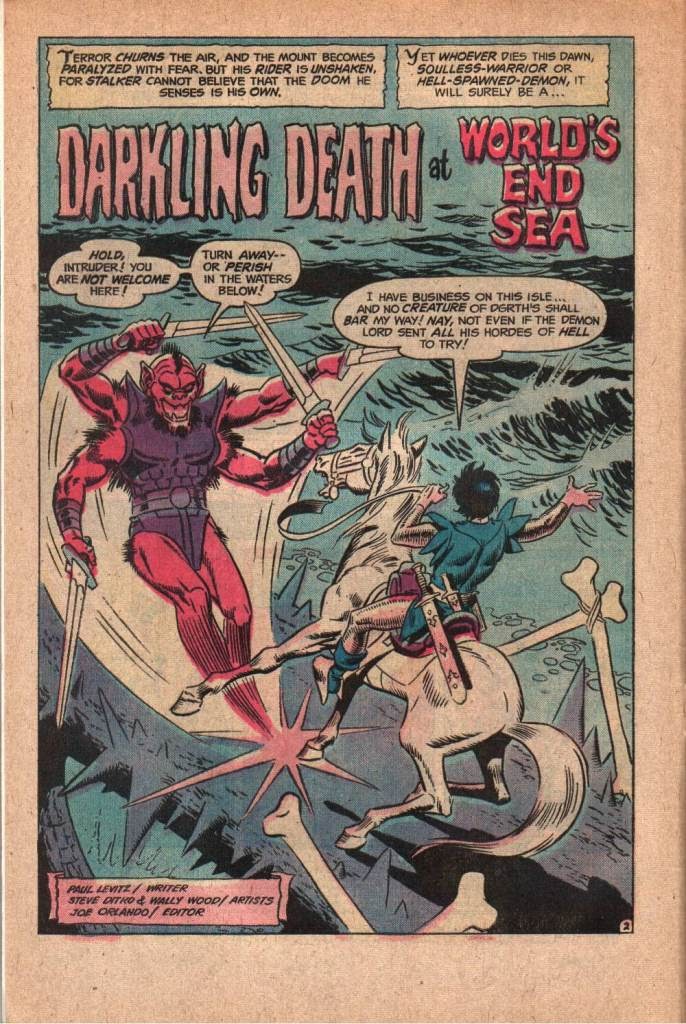
Stalker #2
—
Colorist/production artist/publisher Anthony Tollin: “Jack (Adler) called Sol Harrison ‘the Buddha.’ Sol didn’t get excited, really. I heard this wonderful story about Sol and Sheldon Mayer, DC’s Golden Age boy wonder editor. Shelly was kind of a wild man, and one day a book went to the engraving plant without a cover attached to it. Shelley was up in arms and yelling and screaming, and to calm him down, Sol said, ‘Shelly, I’ve been in comics a long time and I go to the mom-and-pop shops and the newsstands to see how our books look on the stand. And you know, I’ve never seen a comic book on the stands without a cover. And I’m sure by the time this book is printed, it will have a cover.’ Problem solved by the Buddha.”
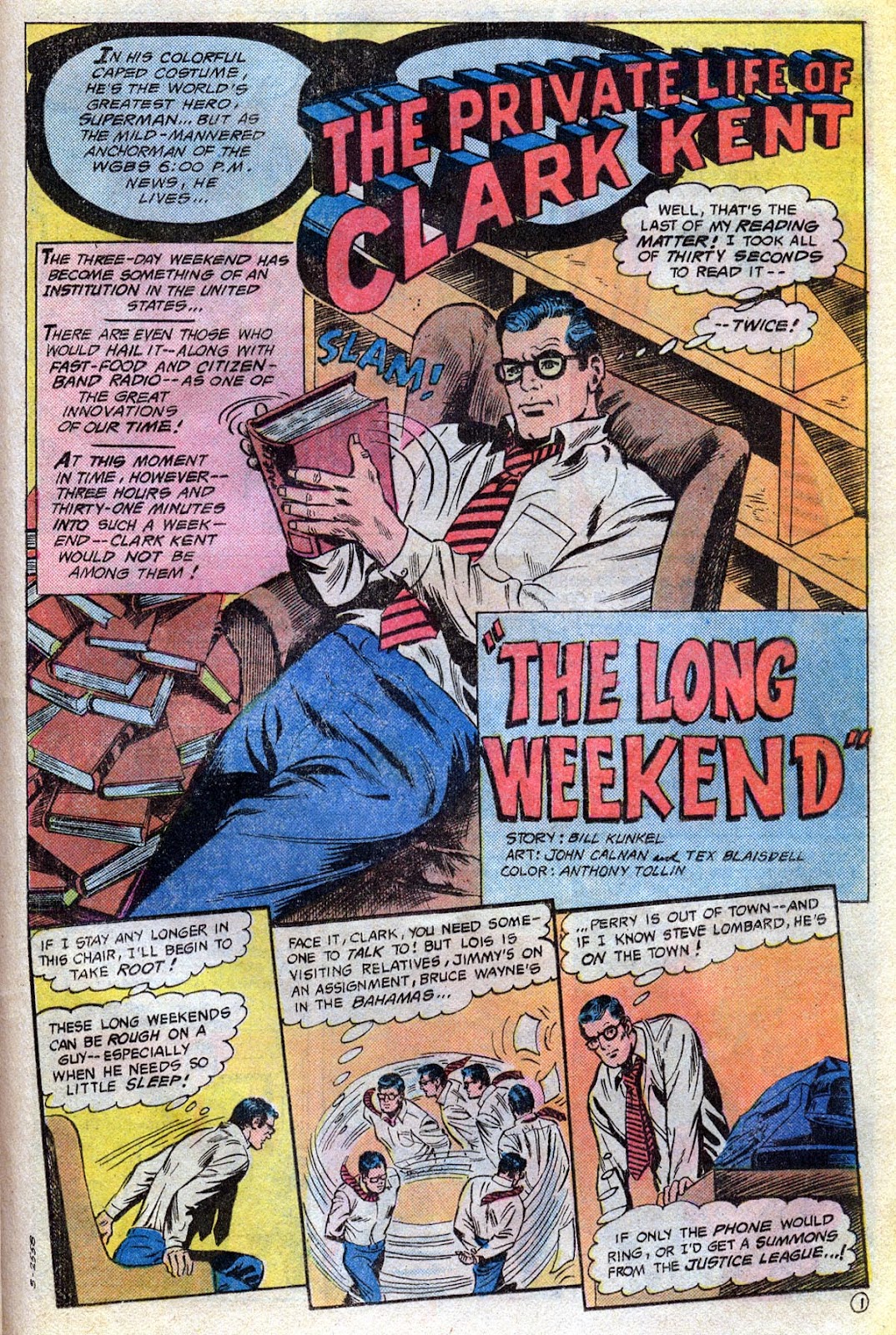
Action Comics #471
—
Writer/producer, the Batman film franchise Michael Uslan: “It was my job to bring Tim Burton into the fold in terms of Batman. I was shocked when I first met him at our first of three lunches, that even though he was this young animator from Disney he really wasn’t a comic book guy, a superhero guy, a Batman guy. So, it was my job to indoctrinate him and the most important thing for me, Paul, and we’re talking about back in ’86, was to keep him away from the wrong stuff and to make sure he saw the right stuff. I mean, after seeing the final cut of Pee-Wee’s Big Adventure (1985), I was afraid of what would happen if Burton got hold of stories like the Golden Age Tweedledee and Tweedledum stories, or the Bat-Robot, or the Rainbow Batman, or any of the Jack Schiff era books. Who knows what could have happened?”
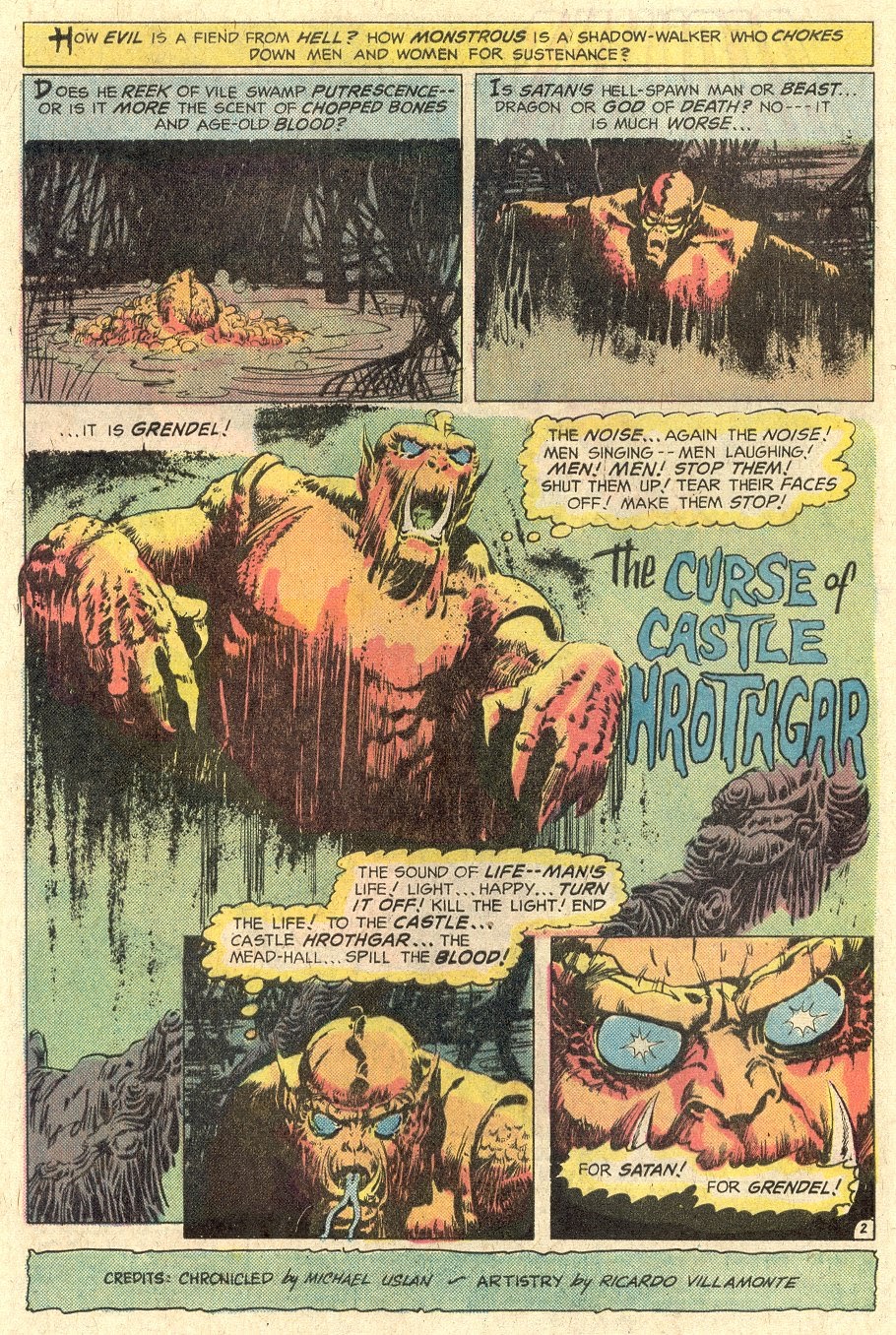
Beowulf #1
—
Writer/science fiction novelist Bob Toomey: “I wasn’t the slightest bit bothered that (Joe Orlando) was tearing the snot out of my story. You couldn’t buy a lesson like that, and I was getting it for free, from Joe Orlando yet, an artist I admired from when I was a kid. After he finished, we went off together to catch our respective train, his to Connecticut, mine to Massachusetts, and the last thing I said to him was, ‘So, you want me to do a rewrite?’ To which Joe responded, ‘I don’t give a crap.’ I took that as a yes, and on the train home, I did a rewrite with all this stuff he’d given me fresh in my mind, and when I got home to Springfield, I typed up the script, turned around and got back on the train, because who needs sleep, and went right back to DC.”
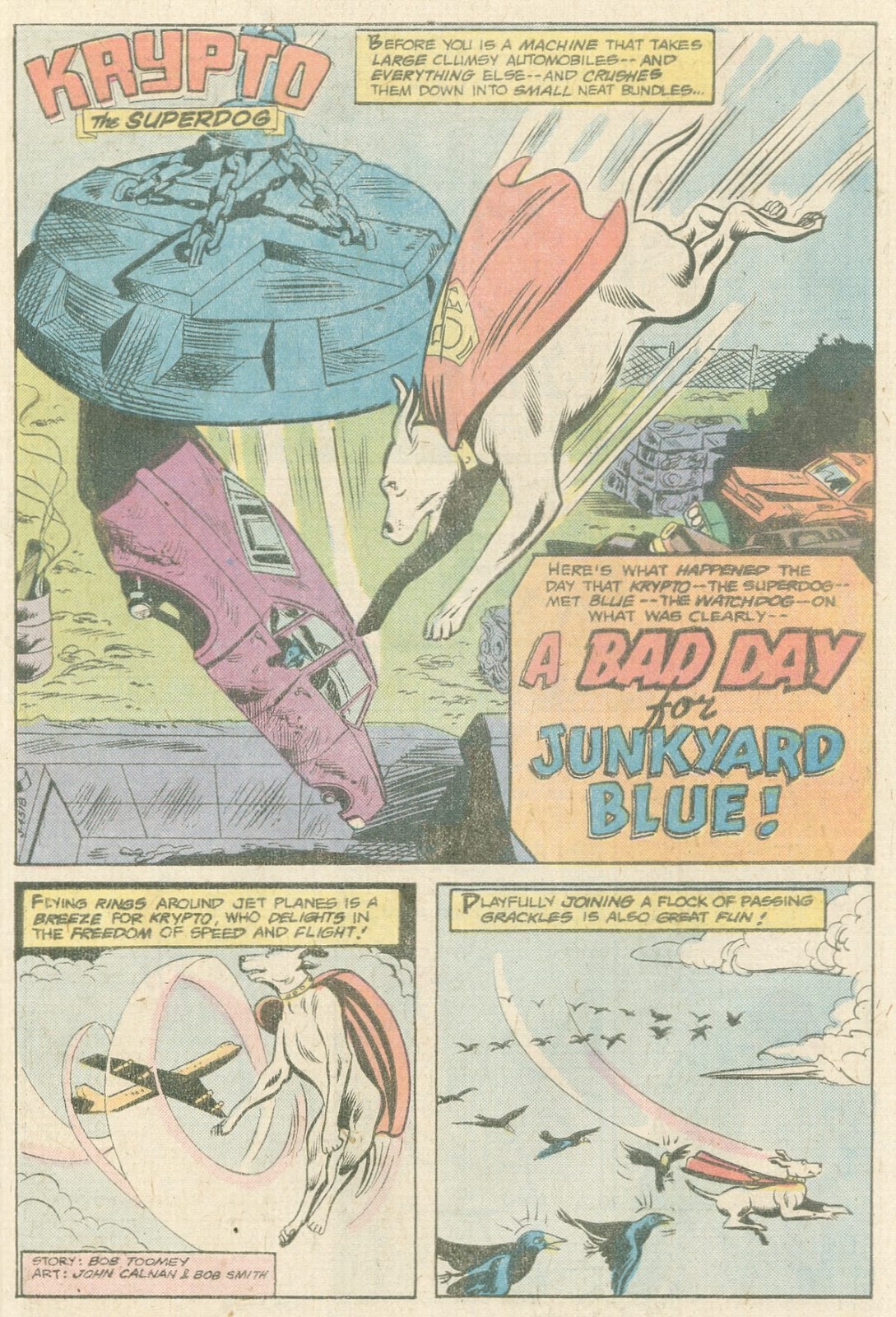
Superman Family #182
—
Writer/editor Jack C. Harris: “(Bob Haney) never wanted to be tied down to any (continuity), and Brave and the Bold was the best Batman book going at the time. Whether it was (Neal) Adams or (Jim) Aparo, the art was outstanding. Aparo did the Joker better than anybody. And I got to be a fly on the wall for some of this. I was Murray (Boltinoff)’s assistant editor on a lot of those issues, so I got to sit in on some of the plotting sessions with Haney… even throw in my own two cents every so often. Jim almost never came into the office. He did everything through the mail. But Jim did the whole job himself — penciling, lettering and inks. One page a day. Thirty pages a month. If it was a month with 31 days, Murray would say, ‘Give Jim an extra cover.’ If you needed 32 pages from Jim one month? Sorry, can’t be done.”
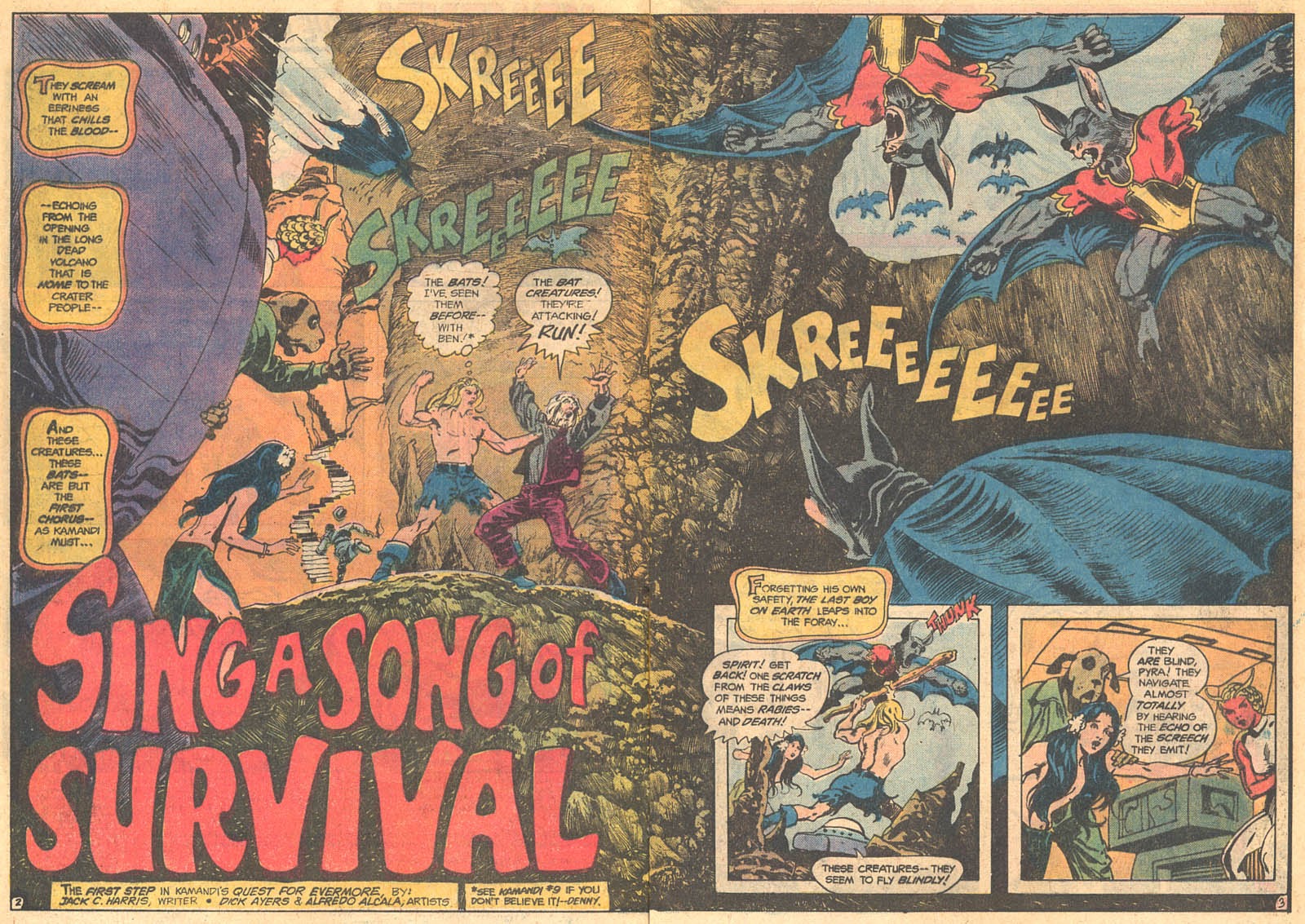
Kamandi #52
—
Writer/production manager Bob Rozakis: “The Comicmobile was essentially a self-funded sales research experiment. The idea was to find new ways to sell more comics and when the Comicmobile didn’t live up to their expectations, they just put it aside and forgot about it. But even though most of the customers were casual readers who would roll up their comics and stick them in their back pockets, I did have a few regular fans, the kids who would ask me to get them the back issues they’d missed on the newsstand. You know, Plop! was our bestseller. At the time, the first issue had had just come out and I couldn’t keep it on the truck. When the second issue came in during the third or fourth week, I was driving the Comicmobile, there was visible relief. “Oh, thank God, you got another Plop!’ And I’d go back to DC, ‘I need more Plops! I sold 50 Plops!’”
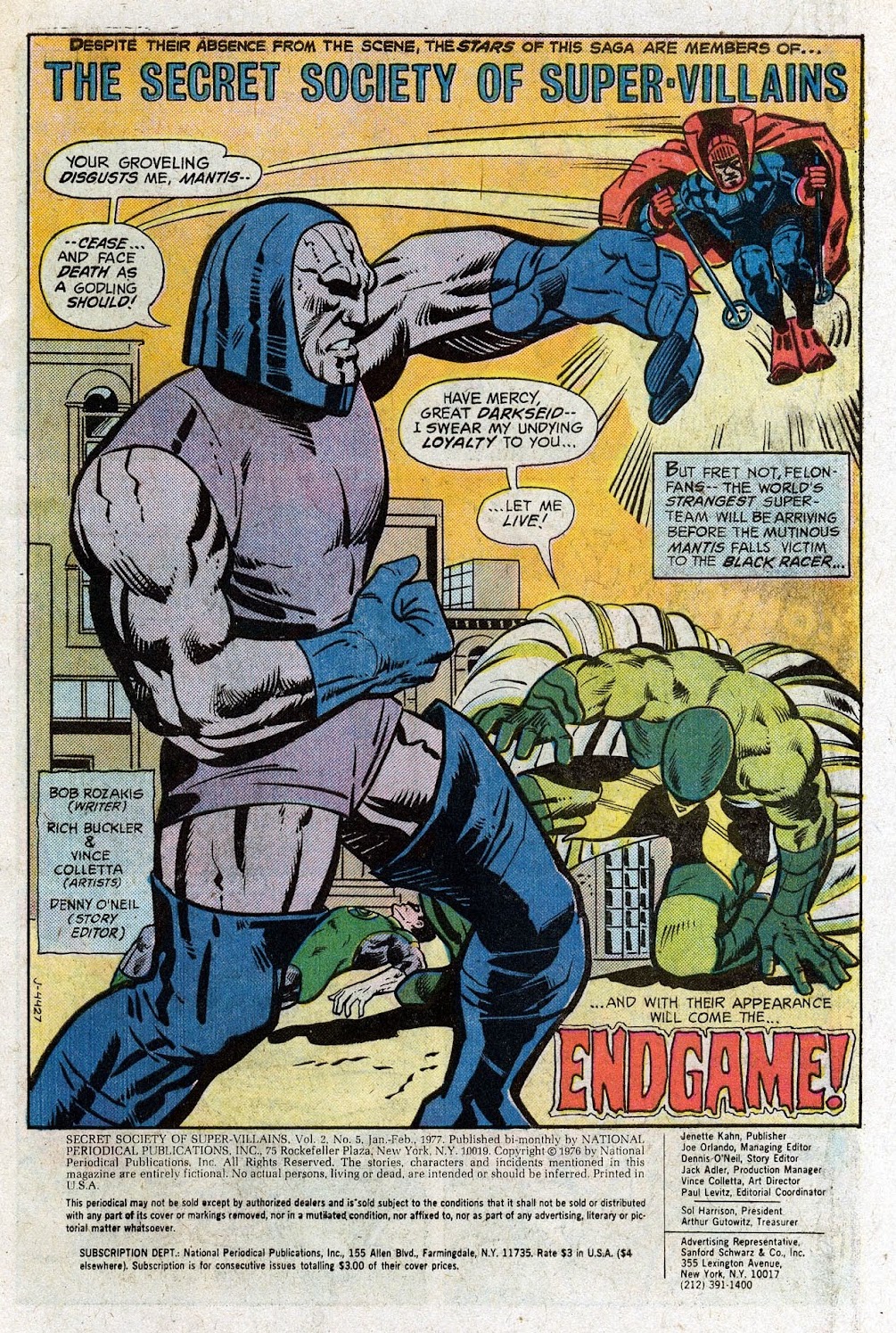
Secret Society of Super-Villains #5
—
Writer/editor Tony Isabella: “(I decided to try for a job in comics) after the Cleveland Plain Dealer went on strike and our picket line was attacked by mounted policemen, because that’s the way things work in Cleveland, and a terrified copy editor knocked me to the ground where a horse’s hoof landed inches from my face. I got up, went home, and called Roy (Thomas) asking if there was any kind of a job at Marvel and there was. They were looking for somebody to work with Stan Lee on the British weeklies. What I did not know until recently was that even before I’d called Roy, Roy had brought my name up to Stan Lee as someone for the job. I apparently was already being considered for it before I called up and asked for it.”
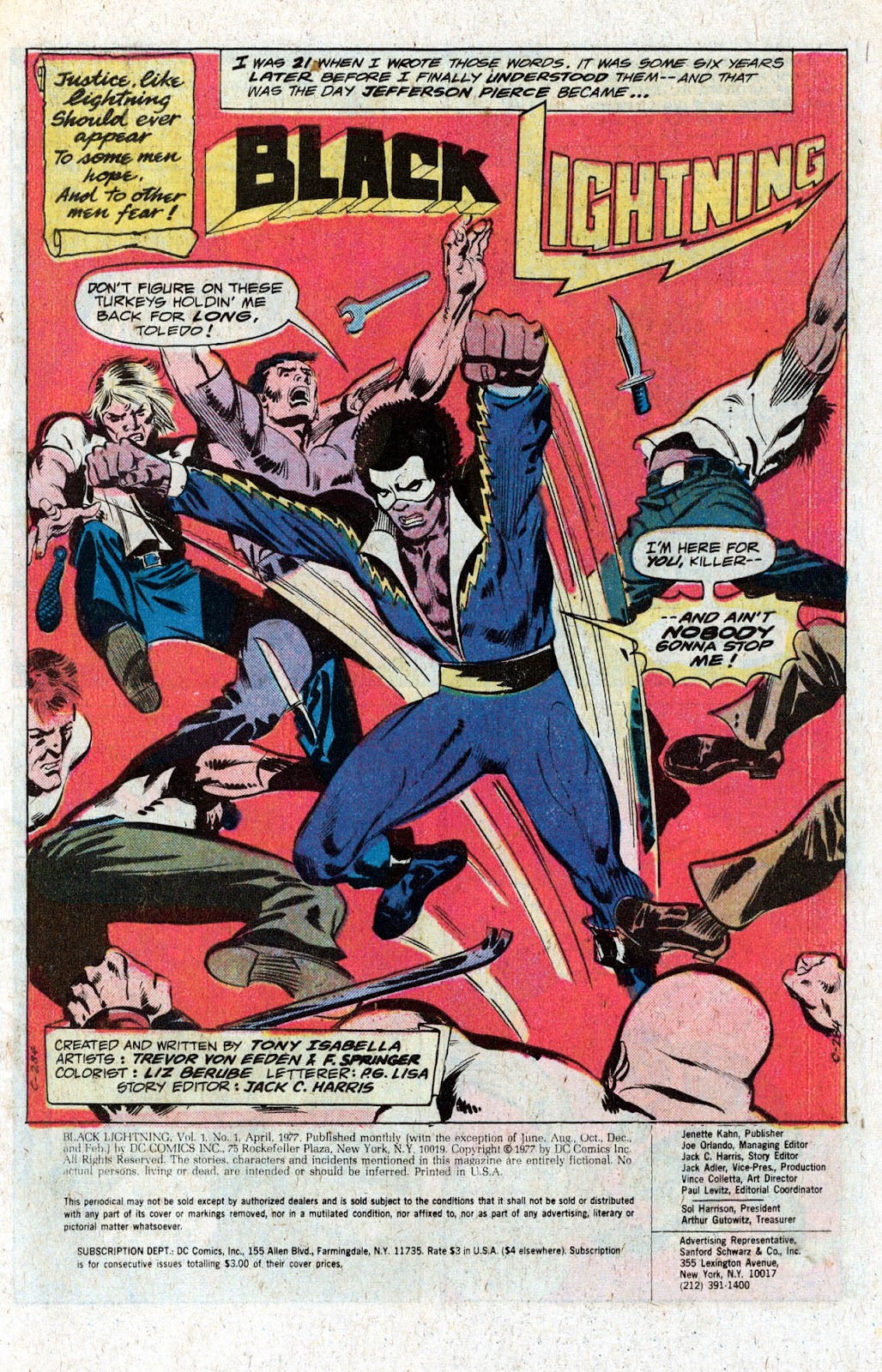
Black Lightning #1
—
Artist Joe Staton: “I really miss the freedom and openness of DC’s office (at 75 Rockefeller Plaza), how you could really just walk in, say hi, and then wander up and down the halls and see if someone had an assignment for you or if anybody was available for lunch, or just to hang out in the coffee room. You never knew who you were going to run into in there. Curt Swan might be getting a cup of coffee or, well, Murphy (Anderson) and Neal (Adams), but they were there a lot. They both liked working in the office at a couple of drawing tables in the bullpen. I was there one day when Curt had just gotten a stack of his original art back and he went up and down the hall, waving the pages, asking ‘Anybody want this? Anybody want this?’ He didn’t seem to care about getting the art back. Maybe he just didn’t want to have to haul it all the way home to Connecticut on the train. Some of his Superman stuff was being inked by Dan Adkins, so I have some of those pages. They’re really beautiful.”
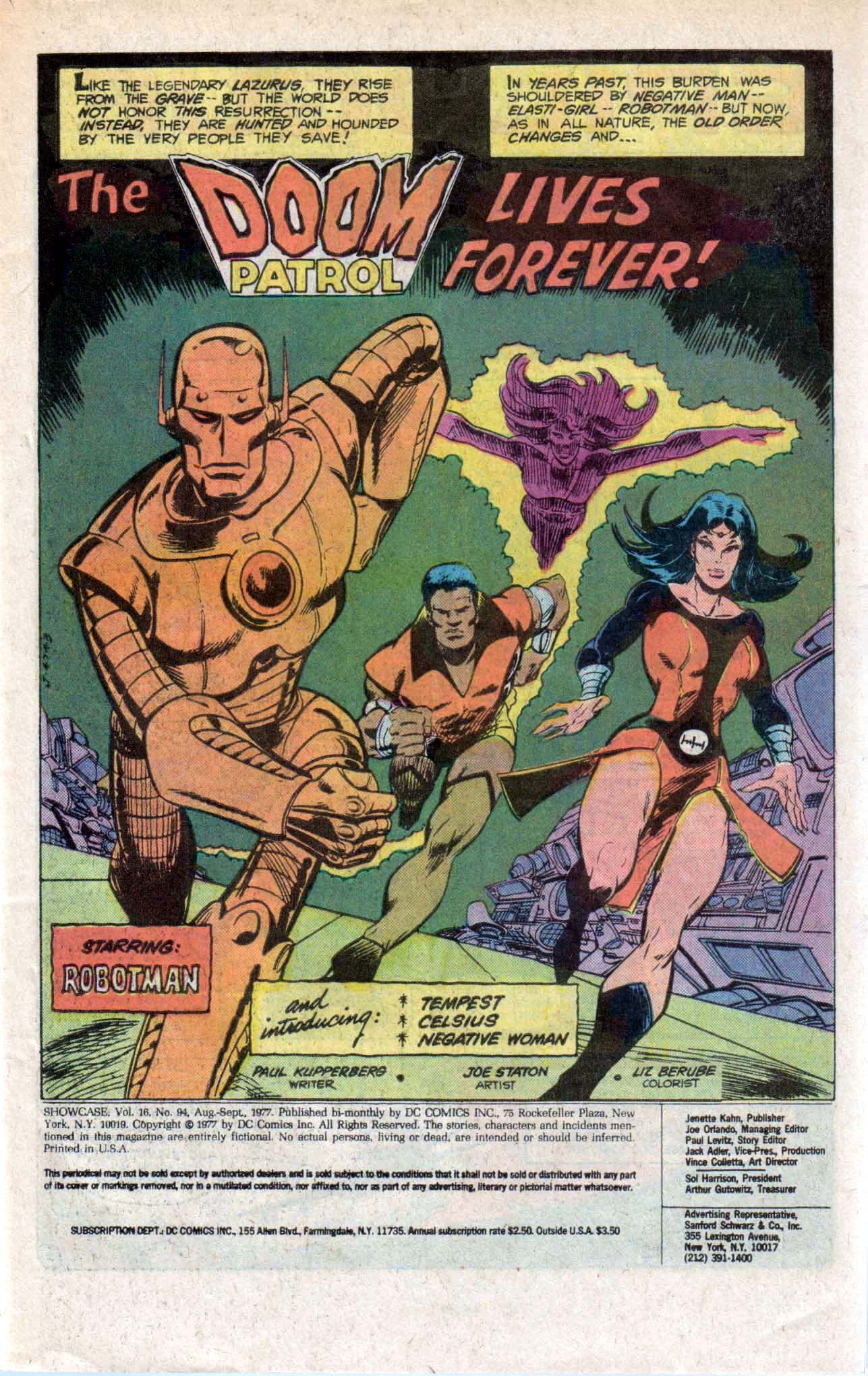
Showcase #94
—
Colorist/production artist/publisher Anthony Tollin: “There’s a famous story about DC at 909 Third Avenue, which had a little lunchroom with coin machines where freelancers would frequently hang out. One day Denny (O’Neil) wandered in, shaking his head in despair. He’s launching a new title based on the old pulp character, the Shadow, but he’s decided the book is cursed. Alex Toth was originally assigned to it, but he didn’t like the script he’d received so he had Richard Kyle write a new one and bill DC for it. Then (Jim) Steranko was going to draw the book, but he fell through, and Denny had just found out he wouldn’t be able to use (Bernie) Wrightson, who really wanted the assignment and had already drawn a house ad for the title but was deemed too valuable on Swamp Thing. If he couldn’t have Bernie, Denny didn’t know what he was going to do, which is when Michael Kaluta, one of the freelancers hanging out, asked, ‘Can I draw it?’ Denny ran down to Carmine’s office and came back a few minutes later with the boss’ OK to give Kaluta the job.”
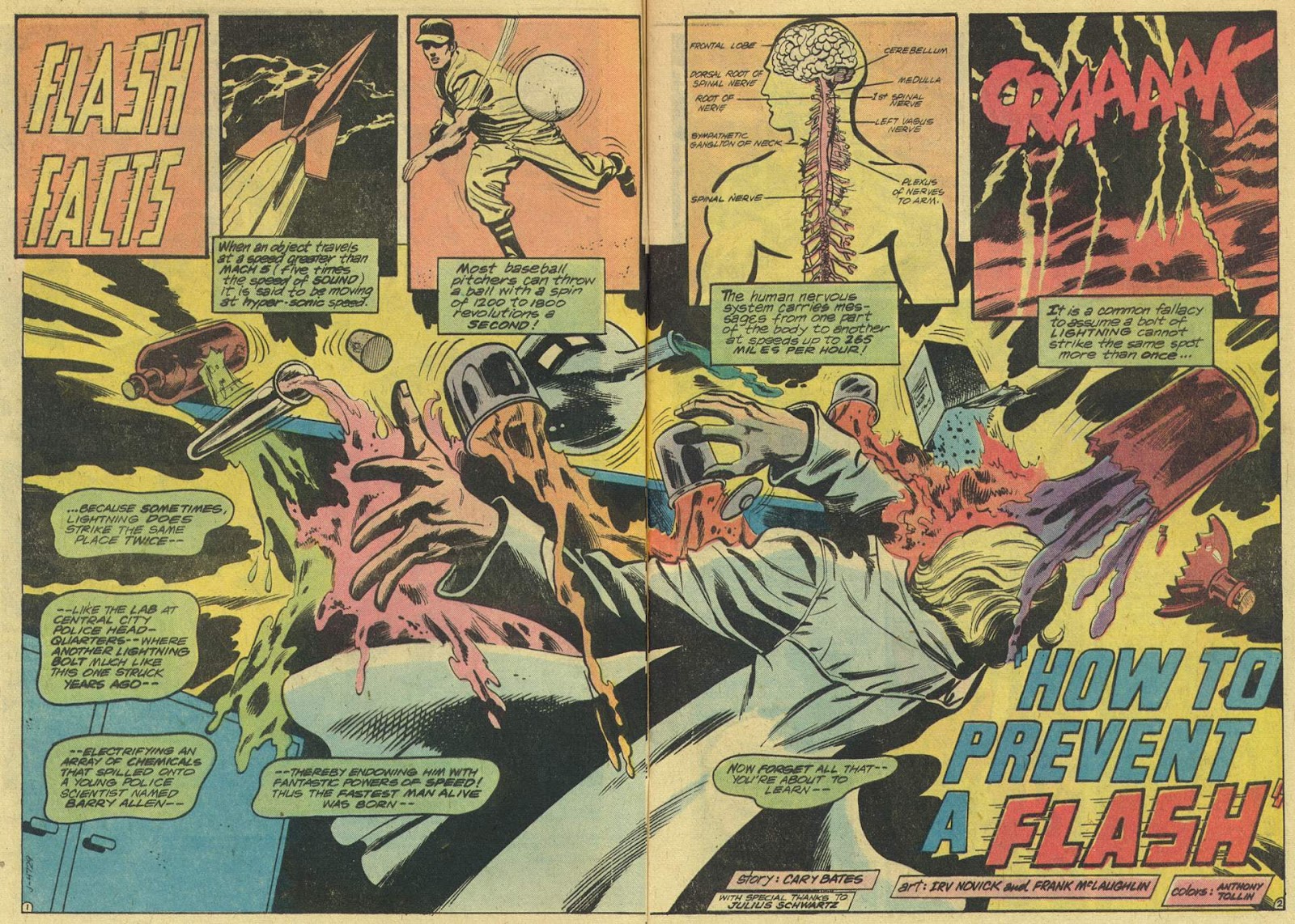
DC Special Series #1
—
Writer/production manager Bob Rozakis: “I had gone to visit Julie (Schwartz) at DC in 909 Third Avenue, where he shared an office with E. Nelson Bridwell, so I brought (the DC character) puzzle pages in to show him. I knew he was a trivia fan and thought he would appreciate them. Julie grabs the pages. ‘What are these? Did you make these up?’ I told him I did, and he ordered me to stay right there, like I was gonna go anywhere. He came back five minutes later with Sol Harrison who says (imitating Sol’s nasal voice), ‘Can you make up some of these just about Superman? Or just about Batman?’ I said I could and just like that I was doing freelance work for DC Comics. Sol ordered three pages each for Superman, Batman and Justice League of America, each with a crossword puzzle, a word find, and a maze.”
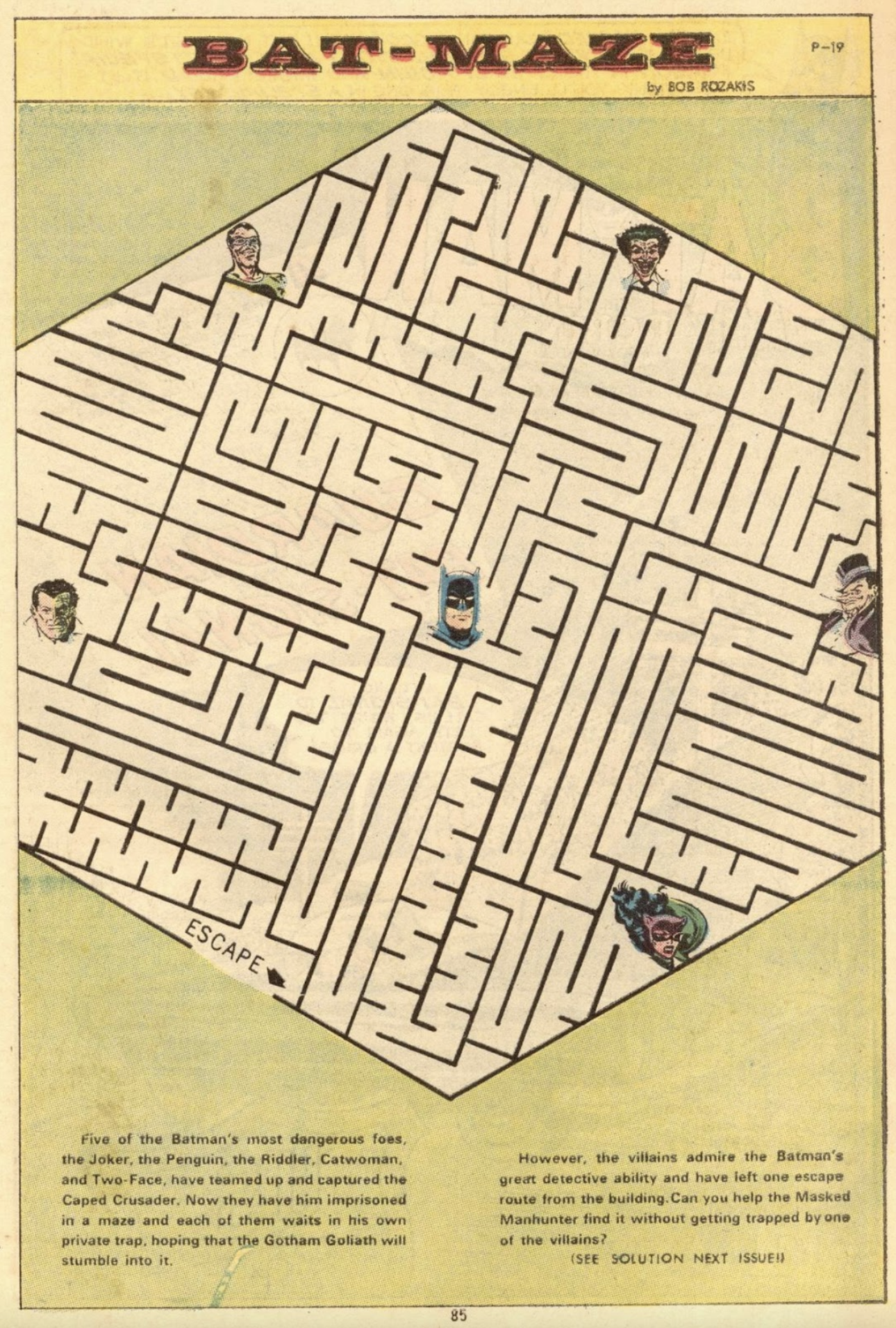
Batman #254
—
The Direct Conversations Kickstarter is live. Click here to pledge. I have! — Dan
—
MORE
— DC IN THE BRONZE AGE: Paul Kupperberg’s Essential Interview Book Hits Kickstarter. Click here.
— Paul Kupperberg’s DIRECT COMMENTS Index. Click here.

October 11, 2022
Sold! Some great bites there. My favorite, “…. (Bob Haney) never wanted to be tied down to any (continuity),….”. YES! Just tell great adventures.
October 11, 2022
Concerning the Michael Uslan/Tim Burton story…. You mean Batman could have been WORSE???